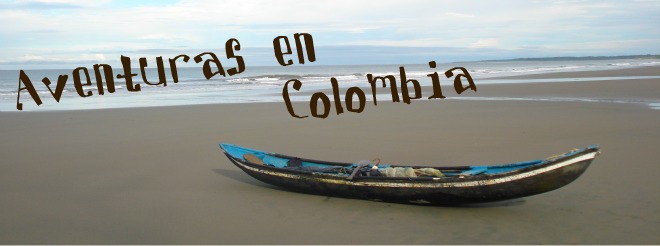



Just when we are getting achingly close to the end of the year, the nation of Colombia throws a bunch of puentes (three-day weekends) at us. Where were those in February? Well, after an extra long puente at the beginning of the month, we were rewarded with another last weekend. Avid readers will recall a mishap in the Bogotá airport back in December (see: “The Mob & Me”) that resulted in free bonos, or airline money. My then travel buddy, Christine, and I decided to finally take the airline up on their offer of a free trip and fly to Medellín for the weekend.
Medellín is the second largest city in Colombia and one of the most unique as far as the people go. Our guide book said that people from Medellín, paisas, are a lot like Texans in that they have more pride for their state than they do for their country. That is not to say they do not like their country, they just like being a paisa better. There is an art teacher at Colegio Bolívar who is a proud paisa and even has his own “Medellín passport.” It is obviously a joke, but it made me think if a better comparison would be Quebec instead of Texas. Either way, paisas are a proud, hard-working, and friendly people.
Aside from being prideful, paisas love to party. Almost as much as the caleños here in Cali, except with a lot less “plastic.” One night out at dinner I ordered a mojito and was told there was a 3 for 1 deal. I said that one was fine but I apparently misunderstood because the waiter basically told me I couldn’t order just one; I had to get three. Okay! Maybe Quebec isn’t a good comparison either. Maybe it should be…Wisconsin!
Medellín is also one of the safest large cities in Colombia. This has a lot to do with the fact that the once powerful Medellín-cartel no longer exists and that enforcement in this region is strong; probably because President Uribe is a paisa himself. Even the homeless and street people were not threateningly desperate! Because of this security, Christine and I did a lot of walking.
We walked from our hotel in the Central District next to the huge Parque Bolívar, to the Museo d’Antioquia which is home to a cornucopia of works by Colombian, and paisan, artist Fernándo Botero. Botero has a thing for fat people. But not in the same way some renaissance artisits liked to paint supple women of the day. Botero likes everything fat – animals, cars, fruit, bouquets of flowers, even houses are bloated. Before even entering the building there are a dozen or so bronze statues in the plaza out front for the enjoyment and amusement of everyone.
One thing I enjoy about Botero’s work is that it can be both humorous and serious. He has created many works, in his distinct style, that portray very topical events in Colombia’s resent history. Often his paintings are of car bombs, earthquakes, class differences, and even the assassination of Pablo Escobar. The best part is that Botero is still alive and kicking and producing more and more art. It is great to see an artist getting this kind of recognition before they are dead!
We spent the rest of our time in Medellín wandering into various churches, looking at randomly placed sculptures, admiring the efficacy of the public transportation system (they had an elevated train like Chicago!), and eating buñuelos. Actually, I couldn’t get enough of these things. They are the closest thing Colombians have to a donut and are basically giant donut holes. I can get them here in Cali but they seemed much more plentiful in Medellín.
One day we took a day trip to a tiny town west of the city on the other side of the mountains. Sante Fe de Antioquia is an old (founded in the early 1500’s) pueblo paisa that has remained relatively unchanged and is a big weekender place for the people of Medellín. It is also HOT. Before leaving we consulted the guidebook and found that it was comparable to the Amazon region. On the ride two-hour ride there we descended a little over 1000 meters, including a drive through a tunnel that took nearly seven minutes! Needless to say, Christine and I got good at drinking juice and walking on the shady sides of the street.
We saw a few nice cathedrals and parks and a crazy old cemetery. The tombs were all holes in the wall with the “head stone” being the cap on the end; no one was buried in the ground. We considered asking some of the grave diggers sitting around having a noon aguardiente bender but decided against it after hearing some wonderfully colorful language coming from them. (It’s nice when your Spanish is proficient enough to pick up on crude language!)
Being such a cultural hub, Medellín and the rest of the area have way more to offer than we were able to see in a weekend. Hopefully in the future I can score another set of free airline tickets to do some more Botero hunting! Thanks Aerorepublica!



